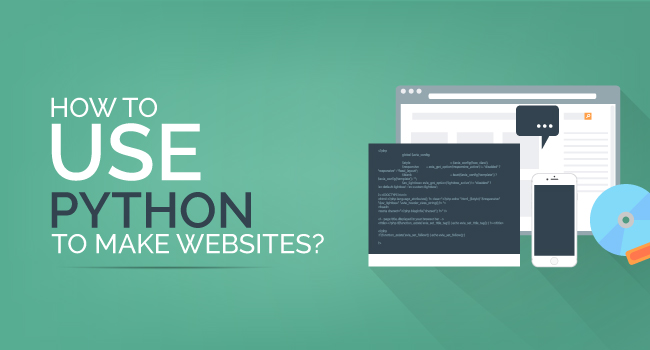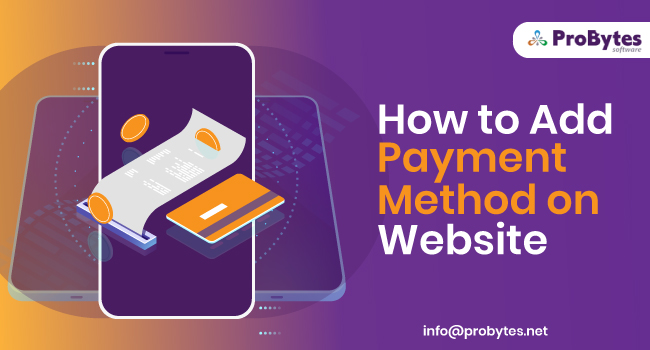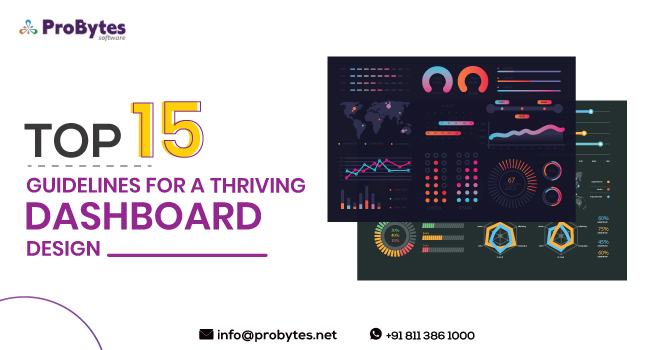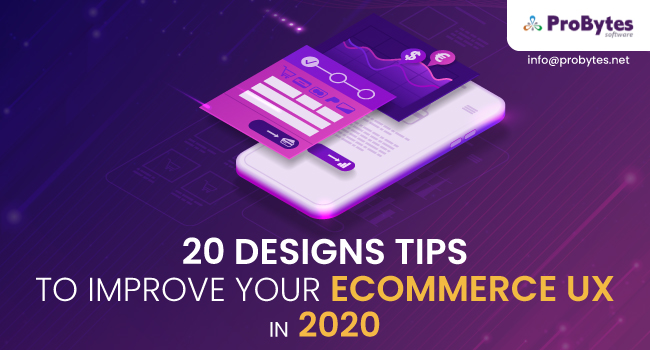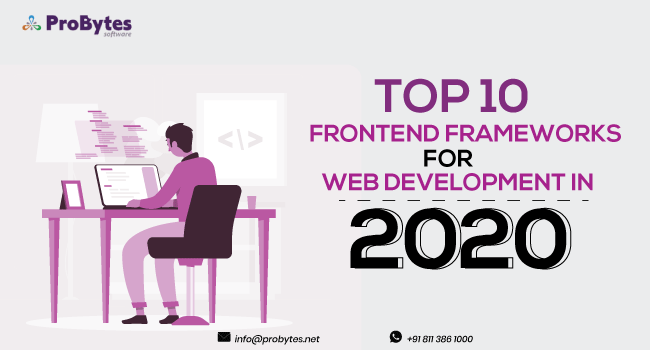Blog Category(283 Blogs)
Latest Ecommerce Trends For 2020
The Ecommerce industry has been steadily developing over the last few decades. Initially, when the digital boom began, only certain industries and sectors used the digital media for selling and marketing their services and products.
But, now every sector, from agriculture to education and even government has climbed on the World Wide Web bandwagon. Ecommerce goes beyond geographical boundaries and breaks physical constraints, enabling even small and medium sized businesses to operate on a global scale.
Read Also: How Much Does it Cost to Build an Ecommerce Website?
In this blog, we will look into the rapid development of the Ecommerce sector and the latest Ecommerce trends for 2020.
Market research shows that the total value of online sales is estimated to top $3.4 trillion by the end of this year. Secondly, more Asian customers are leveraging the online space, leading to a shift in purchasing power from the United States and Europe to Asia, especially China.
Thirdly, the number of competitors on the online space is going to increase at a rapid rate in the next few years. All these facts point to the need for businesses to adapt themselves to the fast changes in Ecommerce.
Online businesses should continually develop, evolve and upgrade themselves to stay ahead of the competition. Let’s take a look at the top 20 Ecommerce trends for 2020 that you need to add to your online marketing plan for the coming year.
1. Mobile commerce
The number of people using Smartphones is easily ten times higher than the number of people using desktops and laptops. With Smartphones now being sold at affordable prices, the number of people who access the internet via their mobile devices is higher.
Mobile commerce is a trend that is here to stay. A study shows that 80% of Americans shop online, and nearly 50% use their mobile phones for online shopping. In Europe, almost 55% of online shopping is done via mobile phone.
It is estimated that the size of the mobile market could be as high as 3.3 billion by 2023. The development of progressive web apps has also accelerated the expansion of the mobile Ecommerce industry. We shall look into the progressive web app trend later in this blog.
2. Mobile payments
The advent of mobile payment services such as GPay, RuPay, Amazon Pay, Paytm, and lots more have made it easy for customers to make online payments.
These one-click payments are quicker and easier than having to log onto internet banking to make payments. Plus, cash backs, discounts and other special offers provided by these mobile payment service providers have encouraged the widespread use of mobile payment methods.
This trend is to grow larger by the coming year. Websites that want to capture this sector should integrate mobile payment options in their Ecommerce platforms.
3. Social media commerce
The social media commerce trend started a few years back and has been steadily gaining popularity since then. Users can explore products on social media sites and make their purchases directly from there. Instagram shopping is one such model of social media Ecommerce.
4. IoT commerce
2020 will see an increase in the Internet of Things Commerce. Online businesses will provide multiple touch points or sales points where customers can make their purchases.
The sales are expected to be done through cars, appliances, voice devices, and social media platforms in the coming year.
5. Flexible payment options
Ecommerce businesses that offer flexible payment options, especially for larger purchases will see more conversion. EMI payments make it easier for customers to spend large amounts. Businesses that offer flexible payment options found the conversion rate increase by up to 30%.
6. Personalized and Customized Products
Personalization and customization are the buzzwords in the Ecommerce trends for 2020. These terms refer to both the products/services purchased and the shopping experience.
Ecommerce businesses can leverage information collected by data analytics to provide personalized recommendations based on preferences, search history, and past purchases. Suggestions can also be provided based on the information shared by the customer.
7. PWA for Ecommerce
Progressive Web apps are the latest trend in the online sector. Web apps are an amalgamation of websites and mobile apps. Designed to load fast, even when network speed is less, these web apps perform well even in regions that have just 2G internet speed.
These web apps are also designed to load in offline mode. It is paramount to invest in a progressive web app to improve your online business sales and performance.
Read our blog on “What are Progressive Apps?” to know more about this emerging trend.
8. Headless Ecommerce
The headless Ecommerce platform is one of the latest Ecommerce trends for 2020. This Ecommerce trend is about creating content once and then tailoring it to the specifications of different platforms.
Headless content allows you to create a seamless Omnichannel experience. You don’t need a separate storefront in headless commerce. All the data is in the backend, which can be shared on different platforms using APIs.
Unlike traditional Ecommerce, headless Ecommerce doesn’t have any design constraints or need for creating a front-end from scratch. It also allows you to create different interfaces and experiences for the admin and the users.
9. Voice Search
It is predicted that voice assistants will be used in more than 8 billion devices by 2023. Also, market studies show that voice commerce will grow up to 40 billion in the next two years.
Voice shopping opens up a huge segment of the market. Already, millions are using Alexa and Siri for internet searches. The dependence on voice assistants is only expected to increase in the coming years. So, it is essential to equip your website for voice searches.
10. AR and VR Imagery or Visual Commerce
Visual commerce or visual imagery is one of the latest Ecommerce trends for 2020. Displaying 3D images has become old news now. Websites use AR and VR to deliver an interactive visual experience.
Read Also: 10 Best Ecommerce Platforms In 2020
Furniture and home décor e-stores use VR to help customers get an idea of how the furniture will look in their home space. Similarly, online stores selling glasses, accessories, and more use visual imagery to help customers have a more immersive shopping experience.
11. Drone Delivery
Over the last few years, top Ecommerce retailers like Amazon, Dominos, and UPS have been experimenting with drone delivery. They have also been successful in some regions.
In the future, we can see drone delivery being used for isolated places. It is predicted that there could be more than 2.6 million drones in operation by 2020. Estimations also show that drone delivery could save up to $50 million in shipping costs.
12. Dynamic pricing model
The Ecommerce sector is highly competitive. So, businesses should continually monitor demand, competitor’s prices, and other factors and create a dynamic pricing model. Ecommerce companies need to determine an optimal price that will give them the best chance of sale while still ensuring that they meet the profit margins.
13. Privacy, Security, and Trust
Ecommerce platforms need to first gain the trust of customers to survive the market. As customers provide more information to gain a personalized shopping experience, they also expect the highest security and privacy of their information. Users should have full control of the information they want to share or delete.
Websites that have the best security options and trust of customers are more likely to succeed.
14. Subscription business model
The subscription business model is profitable both for the business and the customer. It ensures guaranteed monthly revenue for the business while customers get the best value for their money. However, Ecommerce companies need to regularly monitor the subscription model and make revisions based on competitor analysis, seasonal demands and other factors.
15. Customer Analytics
Big Data is growing bigger and bigger year by year. Customer analytics has become a necessity for Ecommerce platforms. These insights about customer preference, demographics, abandoned cart, search history and more help businesses gain a deeper understanding of customer expectations.
The information derived from these insights can be used to create marketing campaigns and also provide a personalized shopping experience. The insights can also be used for programmatic and contextual marketing.
16. Artificial Intelligence & Machine Learning
Ecommerce companies stand to gain a lot by leveraging the right AI-based tools and platforms. From automating certain processes to enhancing customer experience, AI and ML tools offer a wide range of technology-based solutions. AI chatbots have brought about conversational marketing, which has increased customer engagement by nearly 48%.
17. B2B commerce
Initially, Ecommerce only focused on the business to customer model. But now, B2B Ecommerce platforms are also gaining traction. B2B commerce is developing at an even faster rate than B2C commerce. Companies that used traditional marketing methods are now adapting the digital platform. This trend is expected to accelerate in the coming year.
18. Multi-platform commerce
Multiplatform commerce or Omnichannel marketing has been around for quite some time and is still one of the leading trends. Ecommerce platforms should offer multiple channels such as website, mobile app, PWA, social media sites, email, messages, and even phone calls for customers to interact with them.
Ecommerce businesses that have multiple platforms have a wider reach and higher level of conversion.
19. Content Repurposing
Content has been the king of Ecommerce trends for eons. High-quality and informative content is one of the key elements of a website. Purposeful content repurposing refers to the use of the same content in different formats for different platforms. It also refers to the process of personalizing content for each customer based on their shopping experience and preferences.
20. E-commerce to brick and mortar
From brick and mortar to Ecommerce and now back to brick and mortar! This Ecommerce trend has come to a full circle. Many Ecommerce retailers are partnering with existing stores or sponsoring events and putting up stalls in exhibitions to reach out to this segment.
Read Also: How To Make Ecommerce Website Like Amazon
These retail outlets also act as pick up and drop points for online purchases and returns and enhance the personalized shopping experience.
What to do?
Regardless of what kind of industry you operate in, setting up a base in the Ecommerce sector helps your business spread wings and grow faster. Whether you are an established online business or a newbie in the segment, we can help you expand your Ecommerce business. Contact us for a personalized consultation.

 Python
Python Magento
Magento Odoo
Odoo How To
How To How Much
How Much Yii Development
Yii Development Core PHP
Core PHP Prestashop
Prestashop Latest News
Latest News Education
Education Web Design
Web Design Business
Business Ecommerce
Ecommerce Travel
Travel Banking and Finance
Banking and Finance Web Development
Web Development Ruby On Rails
Ruby On Rails Joomla Development
Joomla Development Ecommerce
Ecommerce Magento Development Services
Magento Development Services Hire a Developer
Hire a Developer Web Crawling Services
Web Crawling Services

